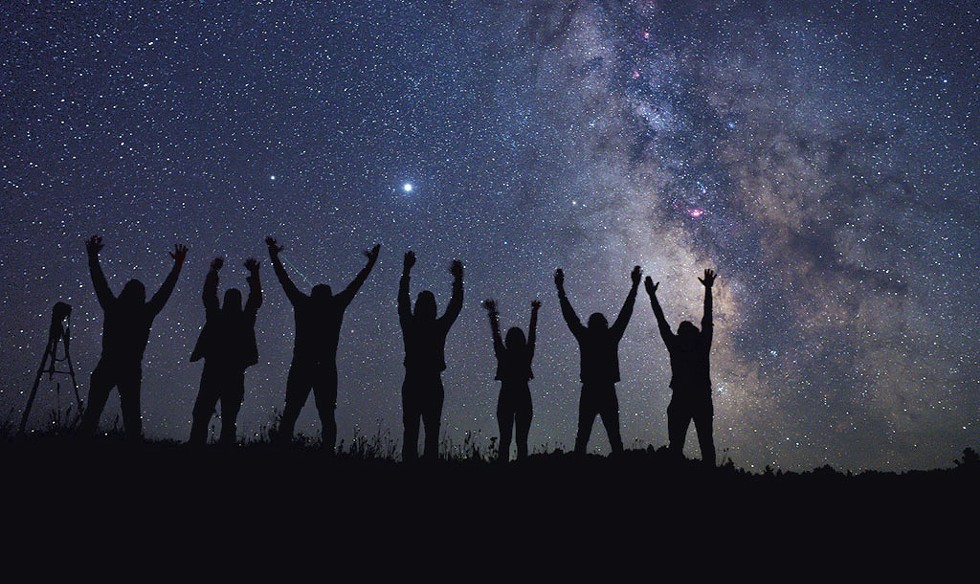
- Courtesy
- Stargazing with Zenderfull
The anticipation at ObservÉtoiles, an outdoor observatory in the Eastern Townships, had been building for hours. Or was it days? I'd traveled there, along with my husband and 10-year-old son, to watch April's solar eclipse at the astronomy-themed spot, which found itself — through a stroke of cosmic luck — squarely within the path of totality. It was quiet as the surrounding forest went dusky. But when the sun disappeared, a gasp rippled through the crowd, followed by an impromptu round of applause.
Want to see the next total solar eclipse in the Eastern Townships? As in northern Vermont, it will be a while — mark your calendar for 2106. But in recent years, the region has earned a reputation for protecting our world's more quotidian darkness, the kind that happens, like clockwork, every night of the year. The border-hugging region of small towns and forests is home to two areas recognized for inky skies: Au Diable Vert, the Sutton outdoor center where ObservÉtoiles is located, and Mont-Mégantic, a first-of-its-kind International Dark Sky Reserve. Both spots draw avid night owls.
"People know that Mégantic is a place to see the stars — it's one of the greatest nature shows," said Sébastien Giguère, scientific coordinator and head of education at ASTROLab, the stargazing-focused visitor center at Mont-Mégantic National Park.
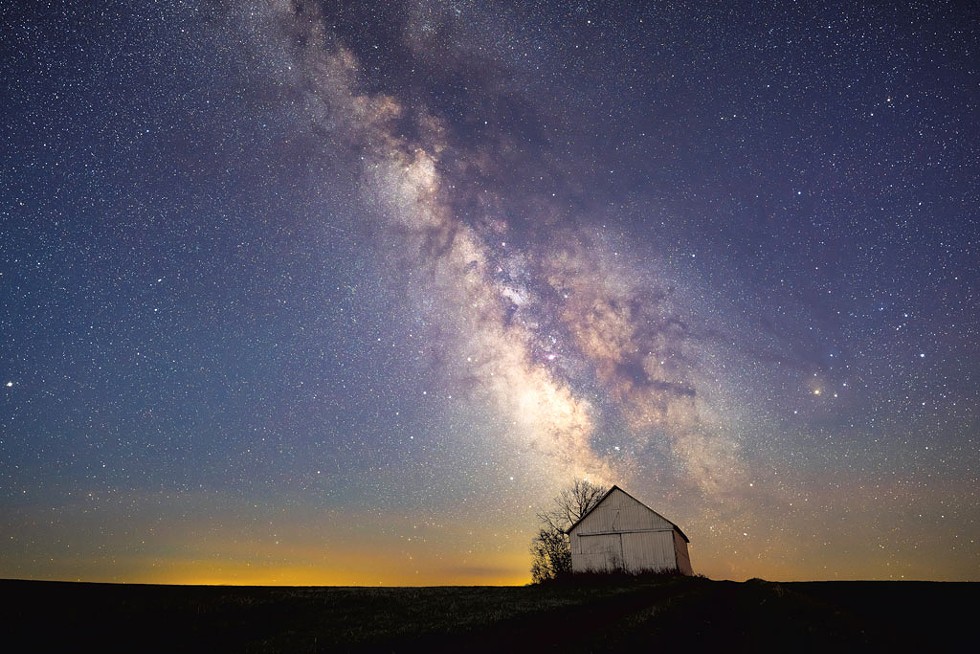
- Courtesy Of Charles Morrissey
- Mont-Mégantic International Dark Sky Reserve
While the park itself has been around since 1994, in 2007 it joined dozens of surrounding towns to form the 2,030-square-mile Mont-Mégantic International Dark Sky Reserve. It's a designation recognizing not just starry skies but also community-wide commitment to keeping constellations brightly visible for generations to come. (Today there are 22 such reserves around the world, in places from Namibia to New Zealand; North America has three.) In the years leading up to the designation, by the nonprofit organization DarkSky International, the region around Mont-Mégantic implemented a broad-reaching plan to reduce light pollution, from replacing light fixtures to limiting the hours and brightness of outdoor illumination. The outcome was a 35 percent reduction in artificial light at night.
Stand atop Mont-Mégantic on a clear night these days and you might spot, with no need for a telescope, the whirling smudge of the Andromeda Galaxy, 2.5 million light-years away. "It's part of the identity now of the region," Giguère said, describing access to starry nights as key to savoring the natural world's beauty. "I can't imagine growing up without seeing a real night sky. To me, it's like growing up and never going into a forest or seeing flowers."
Star-seeking visitors to Mont-Mégantic can start by exploring the ASTROLab at the base of the 3,615-foot mountain. French-language evening tours offer multimedia presentations and, weather permitting, guided telescope viewing outside. Or you could head via shuttle bus for stargazing at the summit's Mont-Mégantic Popular Observatory; that's the public counterpart to the nearby, research-focused Mont-Mégantic Observatory, where scientists from the Université de Montréal and Université Laval peer through the most powerful telescope in Canada.
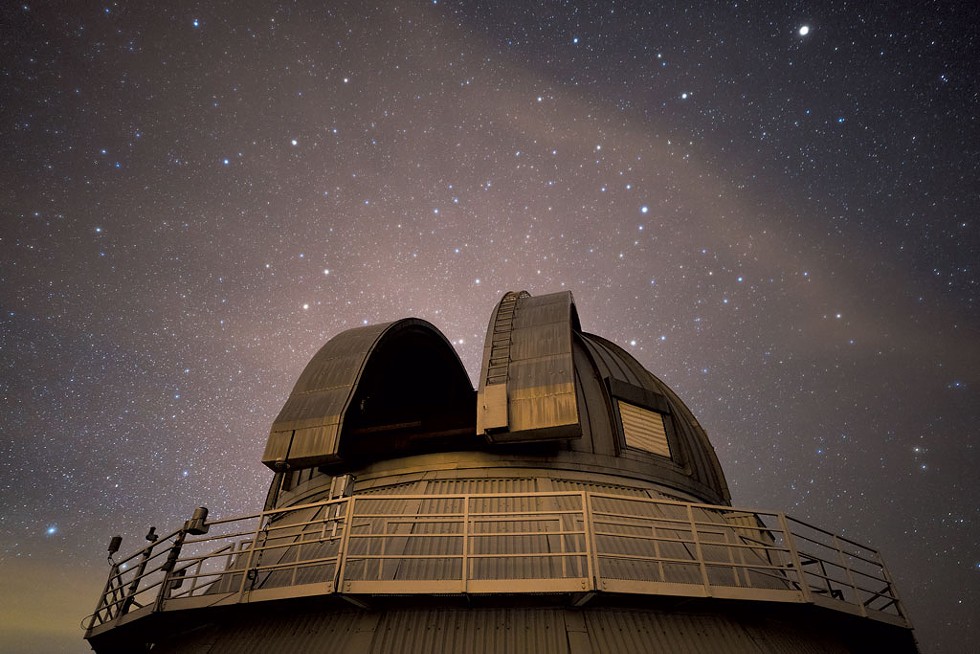
- Courtesy Of Charles Dion
- Mont-Mégantic Popular Observatory
This year's Astronomy Festival, July 4 to 6 at Mont-Mégantic, will feature group stargazing, a guided night hike and a French-language presentation on stardust. The Perseid meteor shower, August 9 to 11, will draw crowds toting blankets and lawn chairs for stargazing, a multimedia presentation on the Perseids and a chance to peer upward through a 24-inch telescope.
Such public events serve, in part, to keep locals invested in the region-wide project. Andrew Reagan, communications manager for DarkSky International, explained that such buy-in is essential to the success of keeping night skies wondrous. "Light pollution doesn't have boundaries. A dark-sky park is only going to be as dark as neighboring communities," Reagan said. "They have to be working with their local communities to ensure that they stay dark."
Many in the Eastern Townships have taken to the theme: Wholesome nocturnal fun has proliferated in the years since the Mont-Mégantic area was named a Dark Sky Reserve. There are guided moonlight hikes at Sutton Natural Environment Park and nighttime, French-language tours of the Granby Zoo featuring encounters with animals that are most active after dark. With a home base in Val-Racine, photographer and guide Samer Hobeika teaches the art of photographing night skies through his star-themed adventure company Zenderfull.
And there's ObservÉtoiles, the open-air auditorium where I took my family to see April's spectacular eclipse and which bills itself as the world's first "open-air augmented reality planetarium." There are stargazing presentations scheduled throughout the summer, but just one is in English — that's on September 1. These sessions are certainly innovative: Audiences don virtual-reality headsets that merge star maps and imagery with views of the actual sky.
"It superimposes ... 17th-century illustrations of the constellations over the real stars in real time as you look around," said Jeremy Fontana, who opened ObservÉtoiles in 2018.
That same year, the surrounding, 560-plus-acre Au Diable Vert outdoor center, which Fontana owns with his wife, was designated a Canadian Dark-Sky Preserve by the Royal Astronomical Society of Canada. Fontana had been working with a local astronomer to measure light pollution on the property, with impressive results. The center has a Sky Quality Meter reading of 20.5, dark enough for clear views of the Milky Way and its inky "lanes" of stardust.
"There's not one single man-made light visible all the way for a 50-kilometer view into Vermont. It's a magical location," Fontana said.
When night fell at Au Diable Vert, we felt that same sense of wonder. My family had arrived at the Dark-Sky Preserve too early in the season to sign up for a star show, but even from our accommodations in one of the property's tree houses, we could see Venus and Jupiter, as well as the familiar curve of the Big Dipper. My son stared up in wonder, tracing the shape of the constellation with his finger.
The excitement of the eclipse still lingered as we donned headlamps to wander through nearby fields. Lying on our backs with so much to see above us, it felt like we could float off into space. I asked my son if he wanted to revisit these starry skies, so different from those at home in Ottawa, the following night. "Sure," he replied. "We just have to look up!"
If You Go
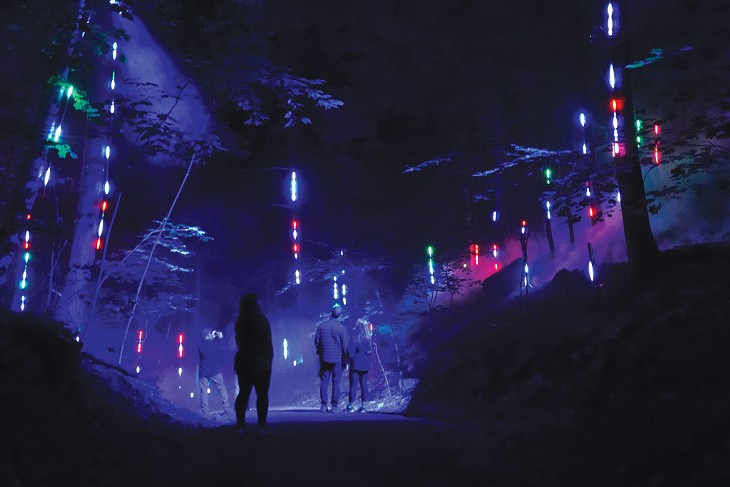
- Courtesy Of Tourisme Cantons De L'est/Mathieu Dupuis
- Foresta Lumina
Tickets to the ASTROLab (astrolab.qc.ca/en, 819-888-2941, nighttime activity tickets CA$22.75, youth 17 and under free) and Mont-Mégantic Popular Observatory (astrolab.qc.ca/en/activity/popular-observatory-evening, 819-888-2941, nighttime activity tickets CA$27.25, youth 17 and under free) are available online. Visit the website to learn more about the Astronomy Festival (astrolab.qc.ca/en/activity/festival) and Perseid meteor shower (astrolab.qc.ca/en/activity/perseids).
Book online for evening shows at ObservÉtoiles (audiablevert.com/en/summer-activities/observetoiles, 450-538-5639, CA$39.99; an English-language show is scheduled for September 1). On-site accommodations at the Dark-Sky Preserve, which also has hiking trails, cycling and paddling, range from wilderness campsites (CA$50 and up) to tree houses (CA$144 and up) to podlike, family-size cabins (CA$189 and up).
Other nighttime activities take place at Sutton Natural Environment Park (parcsutton.com/en/activities/our-activities, 450-538-4085, guided hikes CA$15), the Granby Zoo (zoodegranby.com/en/activities/the-zoo-at-night, 450-372-9113, nocturnal zoo activity CA$125 per person) and Zenderfull (zenderfull.com/escapades, star-themed outings from CA$50 per person, book the three-bedroom, eight-bed Zenderfull chalet in Val-Racine on Airbnb from CA$300 a night). If atmospherically lit pathways at Foresta Lumina (forestalumina.com, 888-524-6743, CA$16.12-29.38) don't hew precisely to dark-sky ideals, the experience is marvelous nonetheless, with a sense of adventure and a vertiginous suspension-bridge crossing.

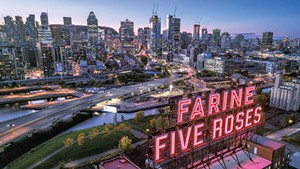





Comments
Comments are closed.
From 2014-2020, Seven Days allowed readers to comment on all stories posted on our website. While we've appreciated the suggestions and insights, right now Seven Days is prioritizing our core mission — producing high-quality, responsible local journalism — over moderating online debates between readers.
To criticize, correct or praise our reporting, please send us a letter to the editor or send us a tip. We’ll check it out and report the results.
Online comments may return when we have better tech tools for managing them. Thanks for reading.